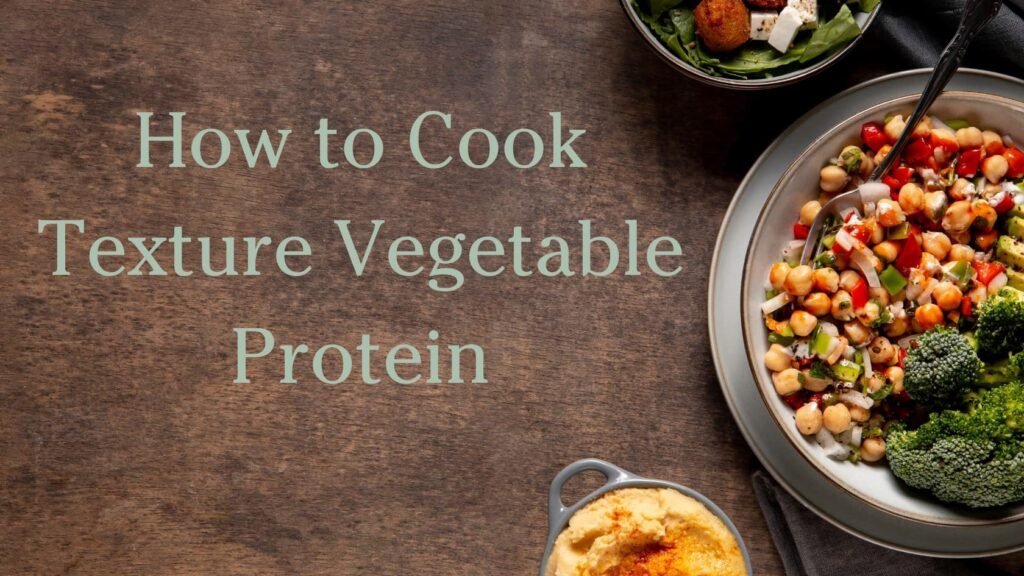Textured vegetable protein or TVP is a plant-based and vegan protein source. It is a byproduct from making soybean oil, made from defatted soy flour, and serves as a great alternative to animal meats. Cooking textured vegetable protein is simple, as your will see below. However, aside from dried, you can also sometimes find it already seasoned or flavored in a sauce.

This plant-based protein has the texture of ground meats and takes on the flavor of what ever it is cooked with. So although bland on its own, don’t be afraid to season generously.
Nutrition
Per 1/4 cup (23 g) of dried TVP, it has 80 calories, 12 g protein, 9 grams of carbohydrates, 4 grams fiber, and 0 g fat [1].
Additionally, it has 2 mg (10% DV) or iron, which can me harder to get on a plant-based or vegan diet, and it is a good source of potassium 591 mg (15% DV) [1].
Finally, it has 5 mg sodium (0% DV), since it is plant-based, it has no cholesterol and with no fat, there is also no saturated fat.
How to Cook Textured Vegetable Protein
1. Rehydrate

When cooking textured vegetable protein from dried it is good to start with rehydrating it in hot water. Different brands have different rehydration instruction but I’ve found a 4:3 ration works best, TVP:hot water. So it you’re using 1 cup of TVP you would use 3/4 cup of hot water.
After mixing with hot water, cover and let sit for 10 minutes. Once done, carefully drain off any excess liquid.
It may need slightly more or less then this so don’t be afraid to adjust as needed.
2. Flavor
Whether you’re going to dry cook your TVP or add it to a sauce, it is important to season it.
Just like when you marinate your meat, letting your TVP sit in its marinade or seasoning for at least 15 minutes before cooking. This gives the chance for the flavors to penetrate the grounds and come through after being cooked.
Seasoning options:
- Dried or fresh herbs
- Vinegars
- Citrus juice or zest (Lemon, lime, orange juice)
- Oils (Flavored or combined with other ingredients)
- Dressings
- Seasonings (Seasoning mixes, smoked paprika, cumin, coriander, onion powder, etc.)
- Garlic
- Marinades for meats
- BBQ sauce
- Soy sauce
- Salt
3. Cook
On its own TVP, has minimal to no fat so when you cook textured vegetable protein it make sure to oil your pan to prevent sticking. Since it is already cooked, all you’re doing is reheating it and getting some color on it.
After that its ready to go.
Uses:
- Try substituting it for mushrooms in our Vegan Tamales recipe.
- Pizza topping
- Meat(-less) balls
- Chili
- Sloppy Joes
- Stuffed Peppers
- Empanadas
- Meat(-less) loaf
- Lasagna
- Stuffed Cabbage leaves
- Meat Sauce
- Lettuce wraps
- Tacos
- Burritos
- Taco soup
- Bulgogi (without meat)
- Topping for salads
Take Away
High quality protein sources are important on a plant based diet and TVP is one of them.
Not only is it a great sources of protein but it is also easy to prepare, high in fiber, affordable, and tasty.
For more on other plant-based protein sources, check out:

Pingback: Zesty High Protein TVP Salad - Fig Lane Nutrition
Pingback: 11 Top Vegan Meat Alternatives - Fig Lane Nutrition
Pingback: Dog Bowls for Humans: RD Tips to Balance the Viral Recipe - Fig Lane Nutrition